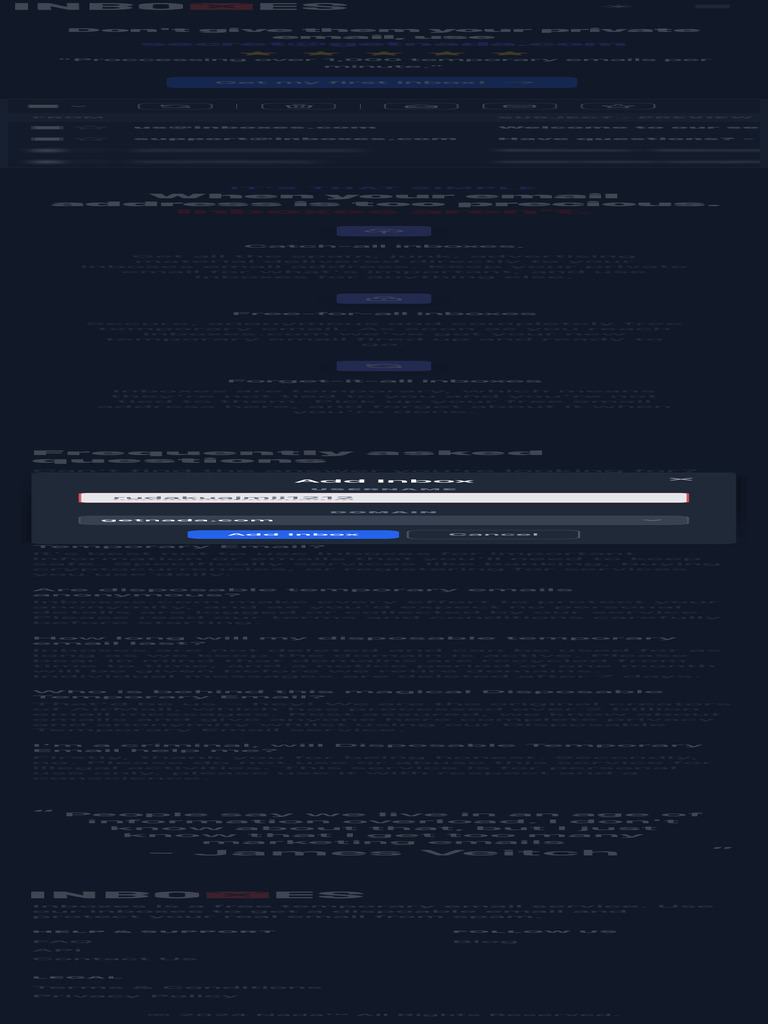Office365 Executive Inboxes Targeted: Millions Stolen In Cybercrime

Table of Contents
The Growing Threat of Office365 Executive Inbox Attacks
Cybercriminals are increasingly targeting Office365 executive inboxes, recognizing that compromising these accounts can lead to significant financial gains. These attacks leverage various sophisticated methods, exploiting vulnerabilities in both the system and human behavior.
Sophisticated Phishing and Spear Phishing Techniques
Attackers employ highly targeted phishing and spear phishing campaigns to gain access to Office365 executive inboxes. These campaigns often involve:
- Realistic email spoofing: Emails appear to originate from trusted sources, such as colleagues, clients, or even the CEO themselves.
- Social engineering tactics: Emails use compelling narratives or create a sense of urgency to pressure recipients into clicking malicious links or opening infected attachments.
- Malicious attachments: These can contain malware designed to steal credentials, install ransomware, or grant remote access to the attacker.
- Hidden links: Links might appear legitimate but redirect to phishing websites that mimic login pages or other secure portals.
Statistics show that spear phishing attacks, in particular, have a high success rate because they are highly personalized and tailored to the target. The success of these campaigns underscores the need for robust email security and user awareness training.
Exploiting Weak Passwords and Account Takeovers
Weak or reused passwords are a primary vulnerability exploited by attackers. Methods used include:
- Credential stuffing: Attackers use lists of stolen usernames and passwords from other data breaches to attempt logins to Office365 accounts.
- Brute-force attacks: Attackers use automated tools to try various password combinations until they gain access.
The importance of multi-factor authentication (MFA) cannot be overstated. MFA adds an extra layer of security, making it significantly harder for attackers to gain access even if they obtain the password. Creating strong, unique passwords for each account is equally crucial. This includes:
- Using a combination of uppercase and lowercase letters, numbers, and symbols.
- Choosing passwords that are at least 12 characters long.
- Regularly changing passwords.
- Utilizing a password manager to securely store and manage passwords.
Leveraging Third-Party Apps and Integrations
Many organizations integrate third-party apps and services with their Office365 accounts for increased functionality. However, these integrations can also introduce security risks:
- Poorly secured third-party apps: Apps with weak security practices can become entry points for attackers.
- Exploiting vulnerabilities: Attackers may find and exploit vulnerabilities within these apps to gain unauthorized access to Office365 data.
Thorough vetting of third-party apps is essential. Organizations should:
- Carefully review the app's security features and permissions.
- Monitor app activity regularly.
- Restrict access and permissions as much as possible.
- Remove unused apps.
The Financial Impact of Office365 Executive Inbox Compromises
The financial consequences of successful attacks on Office365 executive inboxes can be devastating.
Direct Financial Losses
Compromised accounts often lead to:
- Fraudulent wire transfers: Attackers can initiate unauthorized transfers of large sums of money.
- Invoice scams: Attackers can modify invoices to redirect payments to their own accounts.
- Data theft: Confidential financial information can be stolen and used for identity theft or other malicious purposes.
Real-world examples show losses ranging from tens of thousands to millions of dollars. These losses can cripple even large organizations.
Reputational Damage and Legal Consequences
Beyond direct financial losses, data breaches resulting from compromised Office365 executive inboxes cause significant reputational damage:
- Loss of customer trust: Customers may lose confidence in the organization's ability to protect their data.
- Legal ramifications: Organizations may face lawsuits and regulatory fines for failing to protect sensitive information.
- Impact on investor confidence: Data breaches can negatively impact stock prices and investor confidence.
Protecting Your Office365 Executive Inboxes from Cybercrime
Protecting Office365 executive inboxes requires a multi-layered approach encompassing robust security measures, regular monitoring, and a comprehensive incident response plan.
Implementing Robust Security Measures
- Strong password policies and MFA enforcement: Implement and strictly enforce strong password policies and mandatory MFA.
- Regular security awareness training: Educate employees about phishing scams, social engineering tactics, and best security practices.
- Up-to-date anti-malware software: Ensure all devices have up-to-date and effective anti-malware software.
- Advanced threat protection: Utilize Office365's advanced threat protection features, including anti-phishing and anti-malware capabilities.
Regular Security Audits and Monitoring
- Regular security audits: Conduct regular security audits to identify and address vulnerabilities.
- User activity monitoring: Monitor user activity within Office365 for suspicious behavior.
- Network traffic monitoring: Monitor network traffic for signs of malicious activity.
- SIEM tools: Consider using security information and event management (SIEM) tools for comprehensive security monitoring and analysis.
Incident Response Planning
A well-defined incident response plan is crucial for minimizing the impact of a successful attack:
- Clear procedures: Establish clear procedures for identifying, containing, and remediating security incidents.
- Communication plan: Develop a communication plan to keep stakeholders informed in the event of a breach.
- Cybersecurity experts: Have contact information for cybersecurity experts and incident response teams readily available.
Conclusion
Attacks targeting Office365 executive inboxes pose a significant threat, leading to devastating financial and reputational consequences. The methods employed are sophisticated, highlighting the need for a proactive and multi-layered security approach. The key takeaways are the importance of robust security measures, regular monitoring, and a comprehensive incident response plan for effective Office 365 security. Don't become another statistic. Protect your Office365 executive inboxes today by implementing strong security protocols, enforcing MFA, and staying vigilant against evolving cyber threats. Invest in robust Office 365 security solutions and regular security awareness training for your employees to safeguard your organization's valuable assets and reputation. Proactive executive inbox protection is crucial for the long-term health and success of your business.

Featured Posts
-
 Exploring The New Harry Potter Store In Chicago
May 02, 2025
Exploring The New Harry Potter Store In Chicago
May 02, 2025 -
 Did Christina Aguilera Go Too Far Fan Reactions To Her Edited Photos
May 02, 2025
Did Christina Aguilera Go Too Far Fan Reactions To Her Edited Photos
May 02, 2025 -
 Check The Latest Lotto Plus 1 And Lotto Plus 2 Winning Numbers
May 02, 2025
Check The Latest Lotto Plus 1 And Lotto Plus 2 Winning Numbers
May 02, 2025 -
 Lee Andersons Explosive Claim Tory Civil War Erupts Over Rupert Lowe
May 02, 2025
Lee Andersons Explosive Claim Tory Civil War Erupts Over Rupert Lowe
May 02, 2025 -
 Elon Musk Remains Ceo Tesla Board Addresses Replacement Rumors
May 02, 2025
Elon Musk Remains Ceo Tesla Board Addresses Replacement Rumors
May 02, 2025
